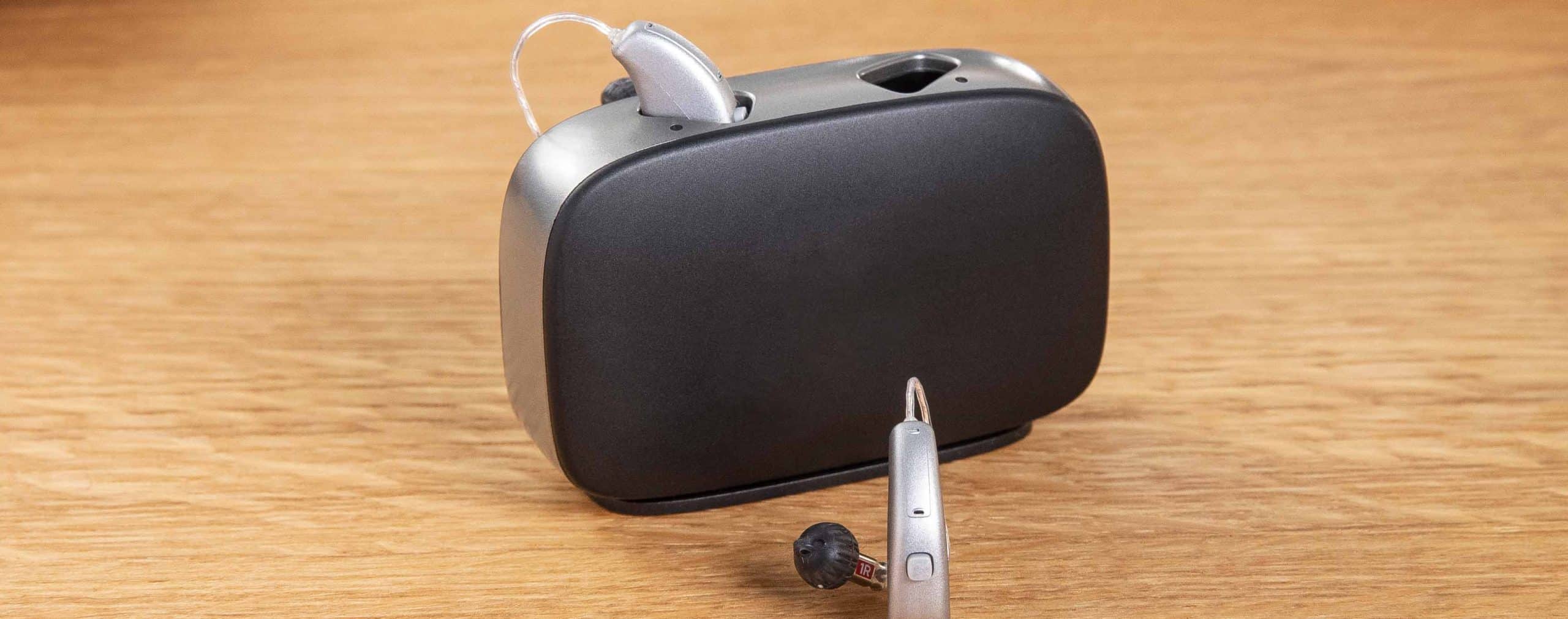BENEFITS OF A RECHARGEABLE HEARING AID

01 March 2022
TNowadays, some manufacturers offer cutting-edge hearing aids with rechargeable induction batteries. This avoids the need to regularly change batteries and is more economical than traditional hearing aids. The built-in Bluetooth technology allows users to easily connect their hearing aids to their smartphone or computer.
Rechargeable hearing aids are easy to use
The rechargeable hearing aid is easy to use with a simple charger. Tasks such as buying, checking, and replacing batteries are no longer necessary. All you need to do is place the devices in the charger every night to recharge them automatically during the night. When the device is plugged in, it automatically turns off, which is convenient for people with vision, dexterity, or arthritis problems. Turning on and off the hearing aid or replacing the battery can be difficult for a person with vision or small object manipulation issues.
Rechargeable hearing devices charge quickly
When you recharge the battery, the lights flash in green. After about 3 to 5 hours, depending on the model, the lights go out and the device enters the dehumidification mode. This takes care of your devices by avoiding condensation problems during their use. You can also use your devices for 6 to 7 hours after just a quick 30-minute charge.
Rechargeable models help preserve the environment
Today, we are all trying to reduce our impact on the environment. Using a rechargeable hearing aid is therefore an excellent environmental initiative. This avoids the production of waste associated with disposable batteries. The new rechargeable hearing aids have lithium-ion batteries, like mobile phones, which makes them more reliable and durable.
Rechargeable hearing aids are economical
The rechargeable hearing aid remains more economical than the traditional hearing aid that consumes batteries. It is estimated that the cost of disposable batteries can reach around $100 per year depending on the model and power. The savings from this amount can easily offset the small extra cost associated with the charger when purchasing the devices: the equipment pays for itself in less than two years.
Rechargeable hearing devices offer long battery life
In the last decade, rechargeable hearing aids have made significant technological progress. The latest devices can last for 24 hours, making them ideal for active individuals. Rechargeable hearing aids prevent unexpected breakdowns during important conversations or appointments, avoiding embarrassing situations.
The technological advancements have made rechargeable hearing aids a major breakthrough for individuals with hearing problems. Rechargeable hearing aids are economical, practical, environmentally friendly, and comfortable, gradually replacing battery-operated devices. However, to ensure their durability, regular maintenance is essential.
*Expected results after a full charge and up to 80 minutes of wireless transmission time.
Sources
JNA (Journée Nationale de l’Audition). (s.d.). Les aides auditives rechargeables : une solution pratique et écologique.
Santé Canada. (s.d.). Les prothèses auditives rechargeables – Conseils pour les patients.
Petersen, E. B., & Frederiksen, T. W. (2019). Rechargeable hearing aids and eco-friendliness: An overview of the advantages, technological options, and limitations. Trends in Hearing, 23, 1-10. doi: 10.1177/2331216519885018
Autres articles
HOW TO CLEAN YOUR EARS: GOOD HABITS TO ADOPT
Cleaning your ears regularly is obviously an important thing to do, since the ears are advanced, sensitive organs that are…
THE DIFFERENT TYPES OF ALMOST INVISIBLE HEARING AIDS
Several types of nearly invisible hearing aids are now available in different shapes and colours to suit the hearing needs…
Understanding Vestibular Balance Problems: Causes, Symptoms, and Treatment Options
Nos vies quotidiennes nécessitent un équilibre, mais parfois, des complications surviennent. Les problèmes d’équilibre vestibulaire entraînent des vertiges, des chutes…


